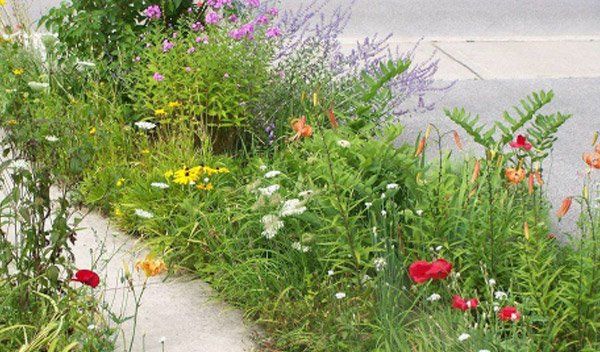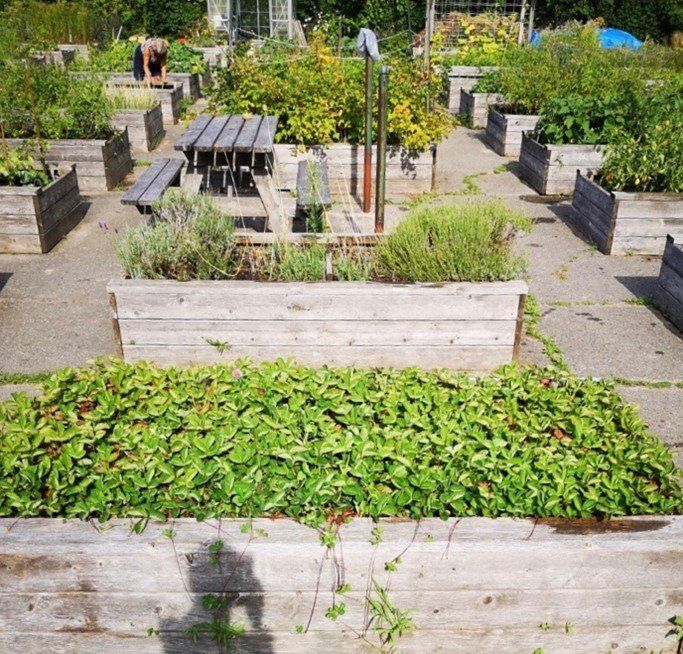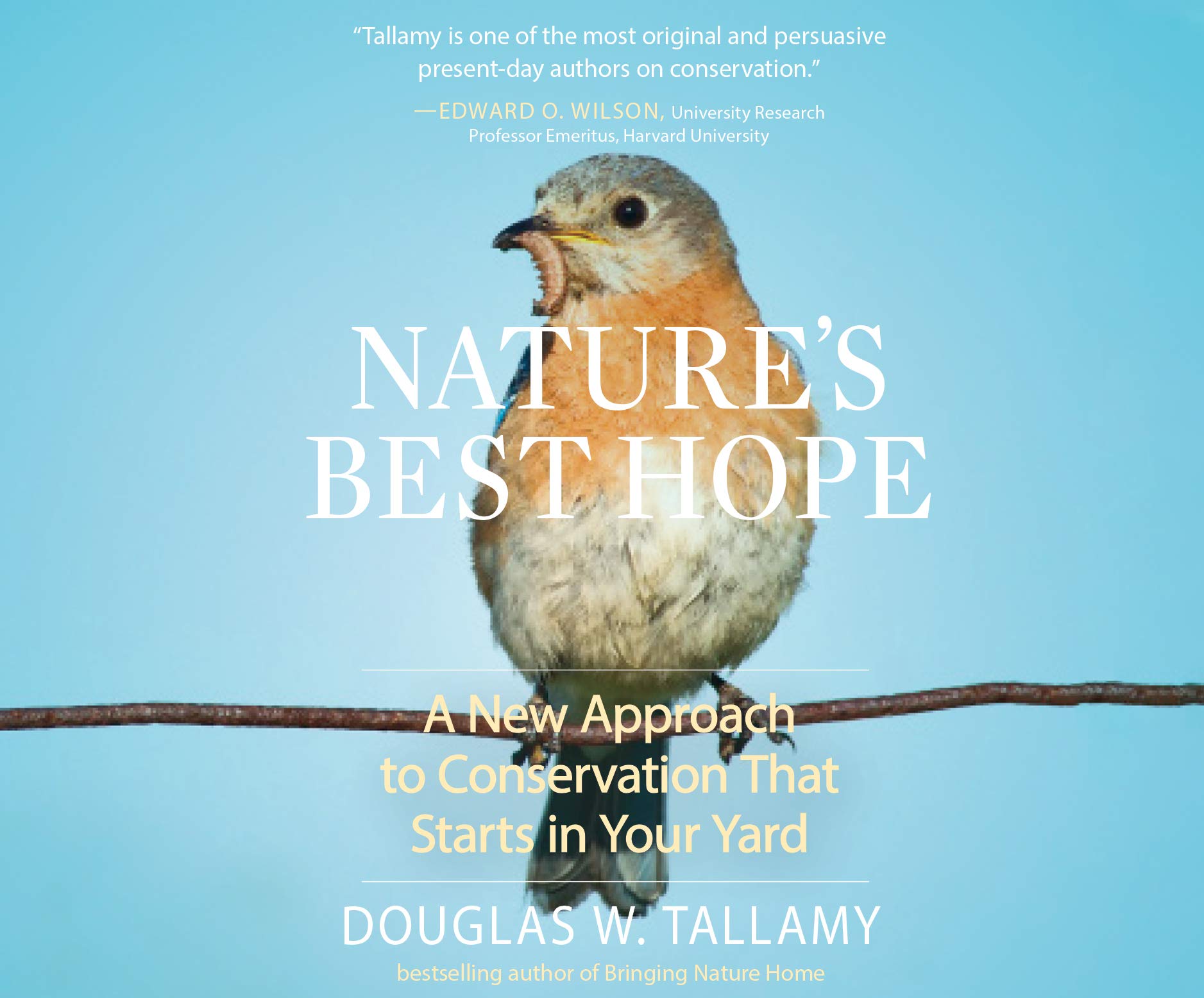Water Wise / Know How
We all want lush, vigorous, healthy gardens, lawns and planters, but how much water do we really need to apply to achieve our goals? How much is enough water, without wasting our precious resource?
Water requirements depend on many factors: Is the soil sandy or clay based; does the garden have a layer of mulch to help retain moisture; has compost been applied yearly to add moisture retention for sandy soil and add porosity to clay soils; is the flora planted, appropriate for the soil type; are the plants drought tolerant or water guzzlers?
A garden and lawn require, for the most part, (depending on the plant choices and soil type), approximately 1 inch of water per week for the water to percolate to a depth of 8 to 10 inches. This encourages a deep, strong root system for plants that will be able to withstand drought conditions and heat waves. Also, plants with deep roots are healthier plants that will be better able to deter pests and disease. When using a sprinkler system to water, try laying an empty tuna can on the ground to determine when you have reached the 1-inch water required.
When watering by hand/hose, 30 seconds per square yard is usually sufficient. Shallow watering creates a root zone close to the soil surface in which plants become easily stressed during drought or heat waves. During these difficult conditions, watering may need to be increased, but first check the soil’s moisture level.
The time of day when you water is important. Try to water in the morning, between 5:00 a.m. and 10:00 a.m. when the sun is not as strong, giving time for plants to dry. This will allow water to penetrate the soil and not be evaporated by the hot, mid-day sun. It will also reduce the risk of sun scald on the foliage. If watering in the morning is not an option, wait until about 4:00 p.m., making sure there is still time for the leaves to dry before night fall. If you must water at night, try to only water the soil, as wet leaves encourage diseases such as powdery mildew. If watering at high sun is your only option, it would be best done by applying water to the root zone via a soaker hose.
We want to be as effective as possible when we are watering to conserve this precious resource. Check the soil first by inserting a finger. If it is dry up to the second knuckle, watering is needed. If the soil is moist just below the surface, hold off watering.
When watering overhead of plants with large leaves, the water can slide off the leaves far away from the root zone... like an umbrella being held over the plant. We call this the “umbrella effect”. Delivering water to the base of plants encourages deep roots and is especially important for establishing new plantings. Leaves themselves take up very little water, so watch out for possible obstacles directing the flow away from the root zone.
Container gardens are a closed system. They are not part of your regular garden’s eco- system and do not have the benefit of surrounding soil moisture and nutrient conditions. They need special consideration for proper maintenance. The smaller the container, the more frequently it will need watering during heat waves and drought. This might mean checking your small pots several times a day during stress times. Larger containers, on the other hand, (from 12-inch diameter and up), usually require less work and may require watering only every other day. Regardless of size however, it is a good idea to check all containers for sufficient moisture each day. When watering, ensure that you see water draining from the bottom of the pot and that the entire growing medium is wetted thoroughly. Frequent watering flushes away nutrients so your containers will need fertilizing for optimum performance. Remember to feed regularly with an NPK balanced product per package instructions.
Flora prefers water temperatures close to what they would receive naturally in a rain event. If you are able to water using rain barrels or containers that have been left out to come up to air temperature, it is a great way to water. (Water from a hose can be shockingly cold). If you are able to give natural rain or well water as opposed to city water, this is all the better for your plants as it won’t contain chlorines and other possible chemicals.
Considerations
- Place plants with like water requirements together, it will reduce unnecessary watering, especially of drought tolerant plants.
- Move towards using native plants that are adapted to our environment. A wide variety is available and when established, most are drought tolerant.
- Consider a rain garden for moisture loving plants and to mitigate water run off!
- Drip Irrigation is a great choice, determine when you have reached 8--10-inch water penetration and set the timer.
- Utilize a sprinkler system, attaching a timer set to the time it took to achieve a 1” watering.
- Rain barrels, capture water and provide the air temperature water plants prefer
- Larger containers require less watering.
- Let the lawn go dormant for the hot summer months. Cut at 2 ½ to 3” height.
- Install a water gauge to help determine rain quantity and water requirements.
- Apply mulch to bare soil to help with water retention and to reduce evaporation.
References
https://www.ngwa.org/what-is-groundwater/About-groundwater/information-on-earths-water
https://www.thespruce.com/watering-deeply-1402418
https://www.hgtv.com/outdoors/gardens/planting-and-maintenance/the-proper-way-to-water-your-garden
https://www.gardeningknowhow.com/garden-how-to/info/watering-during-heat-
https://www.gardenbetty.com/how-deep-are-the-roots-of-garden-vegetables/
https://sciencing.com/the-effects-of-rain-water-on-plants-12390760.html
https://www.canada.ca/en/health-canada/services/home-garden-safety/how-have-healthy-lawn.html
Latest Blog Posts





